- Home
- TV History
- Network Studios History
- Cameras
- Archives
- Viewseum
- About / Comments
Skip to content
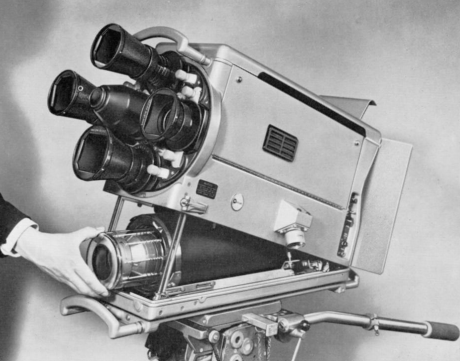

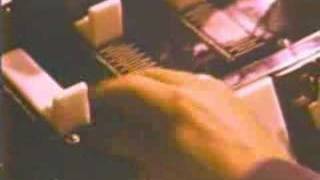

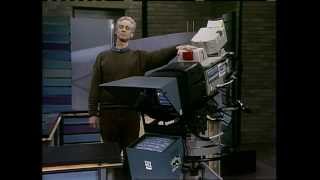

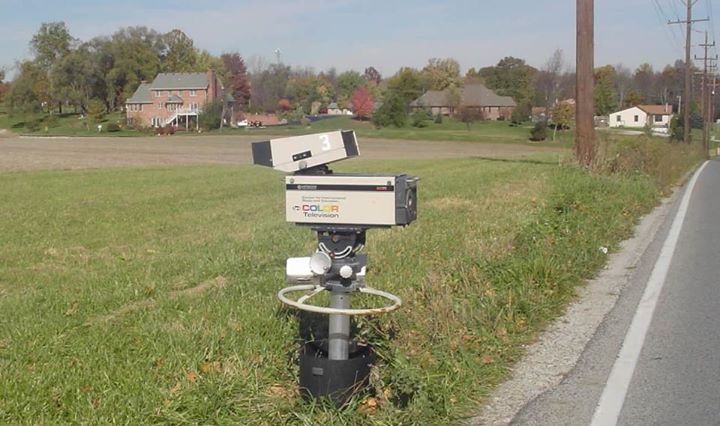

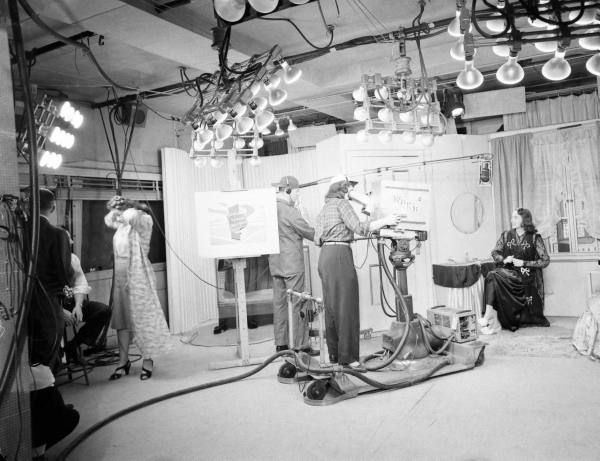

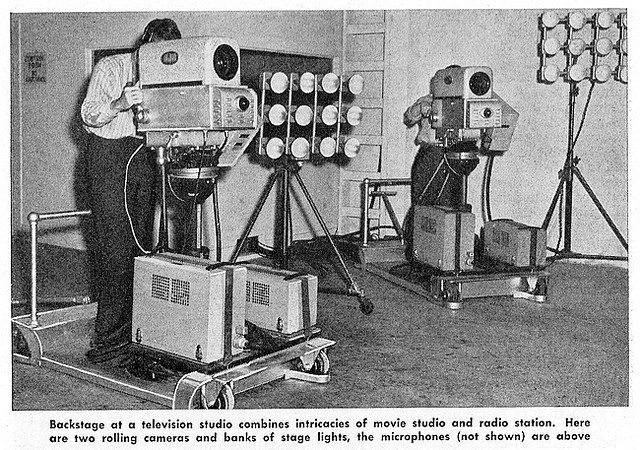

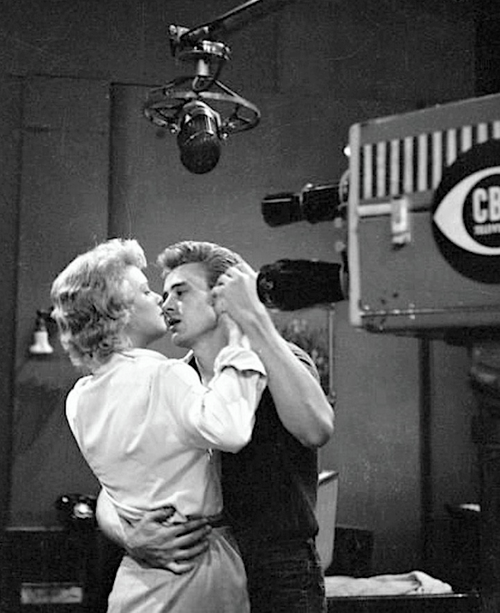

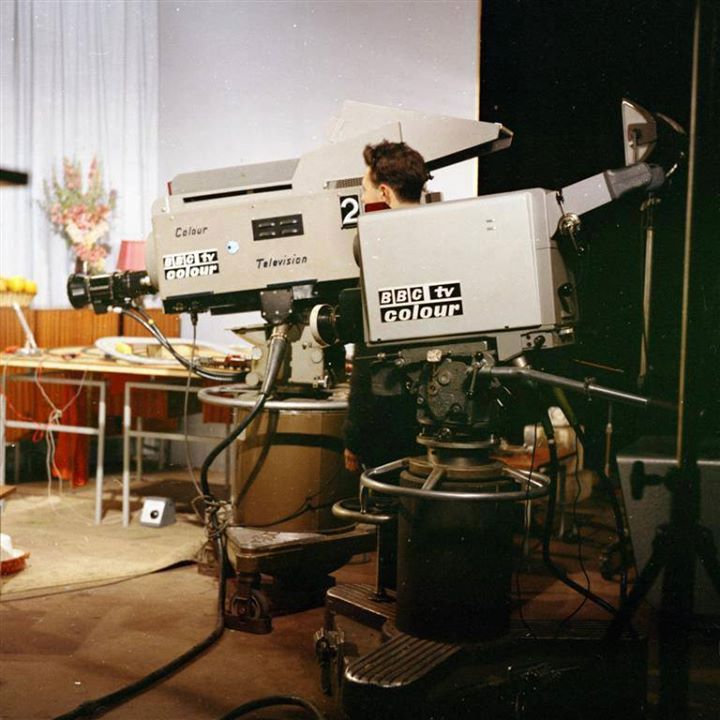

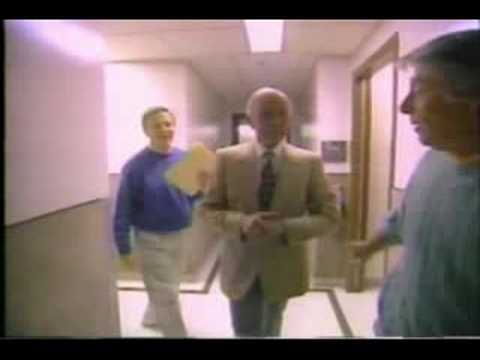

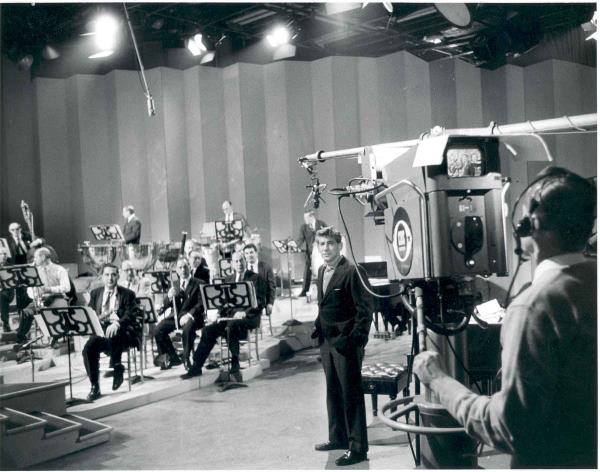



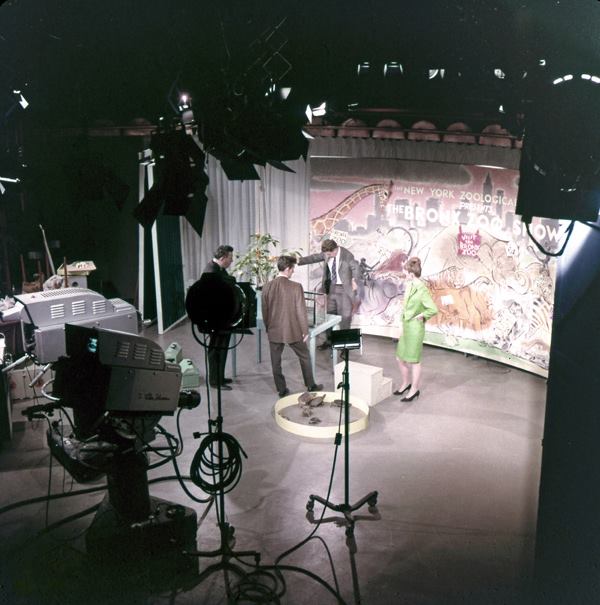

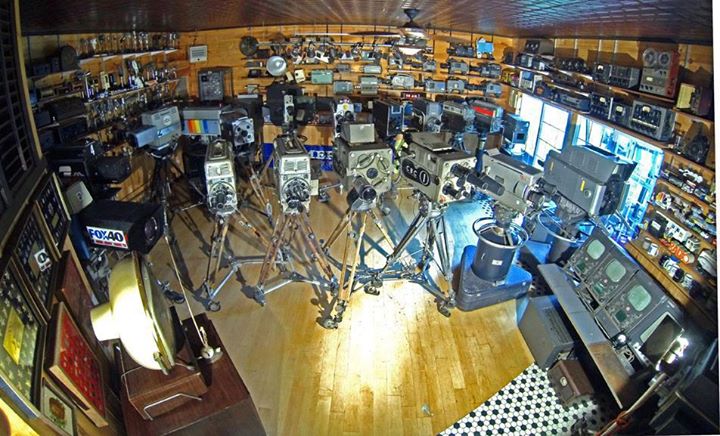

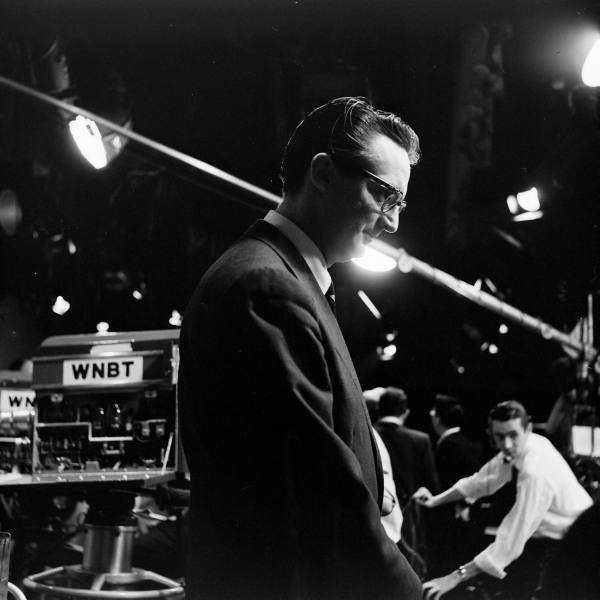

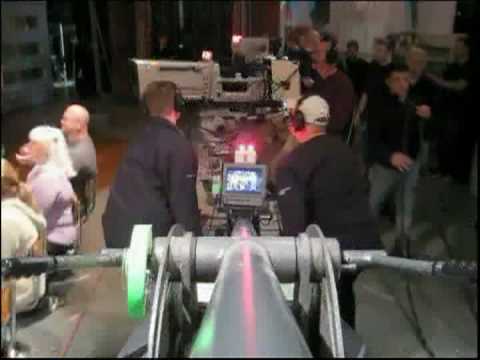

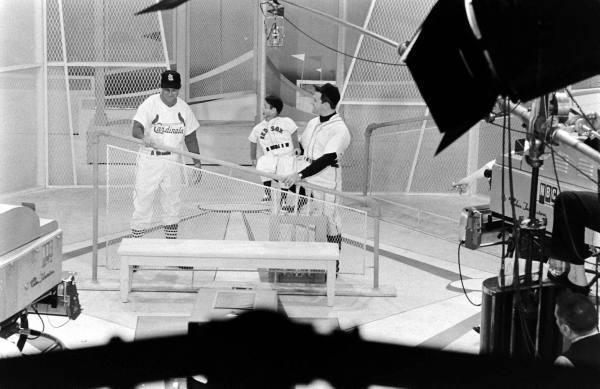



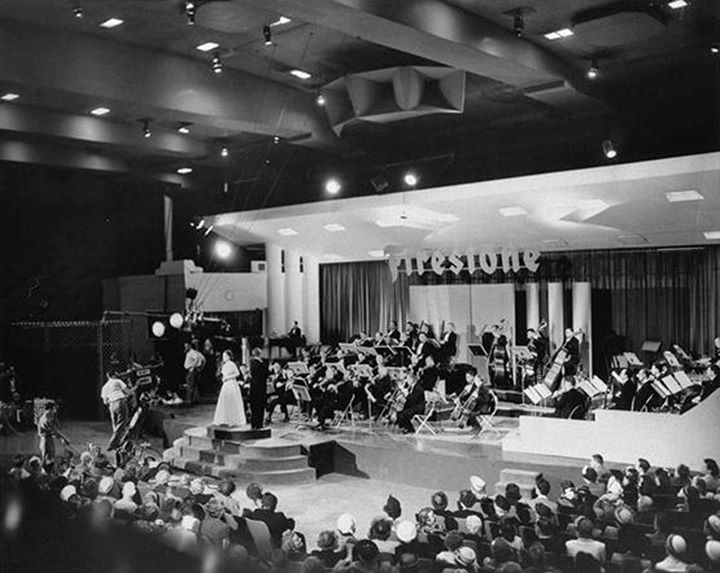

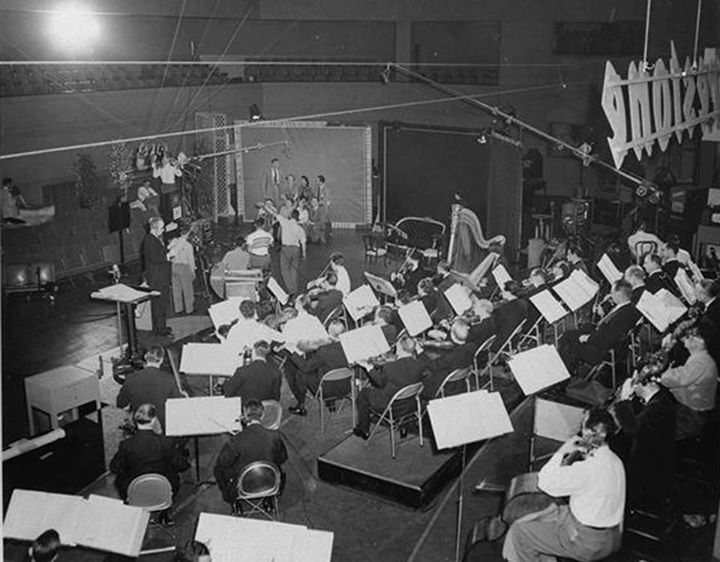



Posts in Category: TV History
Page 108 of 136
« Previous
1
2
3
4
5
6
7
8
9
10
11
12
13
14
15
16
17
18
19
20
21
22
23
24
25
26
27
28
29
30
31
32
33
34
35
36
37
38
39
40
41
42
43
44
45
46
47
48
49
50
51
52
53
54
55
56
57
58
59
60
61
62
63
64
65
66
67
68
69
70
71
72
73
74
75
76
77
78
79
80
81
82
83
84
85
86
87
88
89
90
91
92
93
94
95
96
97
98
99
100
101
102
103
104
105
106
107
108
109
110
111
112
113
114
115
116
117
118
119
120
121
122
123
124
125
126
127
128
129
130
131
132
133
134
135
136
Next » Open Wide!
On August 11, 2013
- TV History
In case you have never seen this feature, here it is. The Marconi Mark IV could be cranked up with the small crank on the lower front corner to give access to the Image Orthicon tube. Great camera and well engineered.


1960s NBC Color Promo
On August 11, 2013
- TV History, Viewseum
1960s NBC Color Promo
This is a :60 second promo for NBC color programs shot at the “Perry Como Show” at the Ziegfeld Theater that shows the lighting director hard at work with a TK41 set to shoot soon.


AT LONG LAST! A Camera Retirement ‘Party’!
On August 9, 2013
- TV History
AT LONG LAST! A Camera Retirement ‘Party’!
The fine folks at WPEN in Green Bay, Wisconsin were thoughtful enough to give their HK 357s a fond farewell after 22 years of faithful service! I’ve never seen anything like this, have you?
http://www.youtube.com/watch?v=4eZRjoFRWGc&feature=youtu.be
Andy Moore: “See this? It’s a camera. But not just any camera. It’s an Ikegami HK 357. It had a life expectancy of eight years when the station bought it. Th…
The Perfect TV Guy Mailbox
On August 9, 2013
- TV History
For those that missed it, here is the camera mail box photo again. I’ve had several requests to re post this, so, here you go. This belongs to our friend John Lessa in Danville, Indiana.
WBKB Studio In Chicago Post Office
On August 9, 2013
- TV History
Some Of The First Women In Television…
Here’s LIFE Magazine photo spread from WBKB in Chicago in 1947. The camera is a Dumont and is being operated by a female. During WWII, this facility was on the air as an experimental station and many of the engineers and studio staff were women. There are plenty more WBKB photos too, just keep clicking on the related images to the right of the main photo on the page this link takes you to.
Early Dumont Cameras
On August 9, 2013
- TV History
Early Dumont Cameras: Configuration 2
Unlike the RCA cameras, the Dumont Iconoscope cameras had electronic viewfinders which were side mounted. This called for more equipment at the camera and this is one configuration of how that was done. I suspect the larger box is the camera control unit and the smaller one, the power supply. These are mounted on simple rolling dollies with rear steering. The cameramen have their hand on the focus lever. These were probably 50 or 75mm lenses. Dumont was the only one to use the ball type pan heads. This photo was probably taken in Washington in the summer of 1945.
On May 19, 1945, DuMont opened experimental W3XWT in Washington, D.C. In 1947, W3XWT became WTTG.
ULTRA RARE: A CBS Pye Camera
On August 9, 2013
- TV History
ULTRA, ULTRA RARE: A CBS Pye Camera
Below is a photo of James Dean and Betsy Palmer in ‘Sentence of Death’ which aired on CBS, August 17, 1953 on Westinghouse Studio One (Season 5, Episode 46).
The camera is a Pye Mark II, Type 2014. This is the only photo I know of showing Pye cameras at CBS in New York. I think the Pye cameras replaced the Dumont cameras at Studios 53 to 56 in Liederkrantz Hall at 111 East 58th Street. I have a feeling that they were only used for a short time, possibly arriving in mid 1952, and then sold almost immediately after use on this broadcast. In late 1953 and early 1954, WJBF in Augusta, Georgia, WHA in Madison, Wisconsin and WVEC in Hampton, Virginia went on the air with these same camera models and all were started on a shoe string budget. I think they all came from CBS. These are the only 3 stations I know of that used the Pye camera and by coincidence, they all went on the air around the same time. I suspect CBS sold them to buy some RCA TK11s which came out in May of 52.
Below is a link to a video snip of the Studio One episode.
Super Rare! First Plumbicon Tests…
On August 8, 2013
- TV History
Super Rare! First Plumbicon Tests
The smaller camera is one of two experimental models of the first color plumbicon camera from Philips. It is the predecessor of the Philips LDK1/Norelco PC60 and it ha been built inside the body of a Philips monochrome camera. It is being compared in performance by the BBC to the Marconi BD 848, which is a 3 Image Orthicon color camera, very much like the RCA TK41. The date is probably late 1963 or early 64.
CLASSIC! Final Days Of ‘Tonight’ With Johnny Carson
On August 8, 2013
- TV History
CLASSIC! Final Days Of ‘Tonight’ With Johnny Carson
This is a great behind the scenes look at the show, shot in the final days of production with Johnny and Ed as hosts. The year is 1992 and the cameras are RCA TK47s. Enjoy!
http://www.youtube.com/watch?v=NSDcQkpb9sE
A Behind the Scenes Look at Production of The Tonight Show with Johnny Carson. Carson Hosted the Popular Show From 1962 Until Turning Over the Set to Jay Len…


Leonard Bernstein’s Young People’s Concerts: CBS 1958-1972
On August 7, 2013
- TV History
Leonard Bernstein’s Young People’s Concerts: CBS 1958-1972
These special musical presentations for young people by The New York Philharmonic were actually started in 1924, but when conductor Leonard Bernstein arrived in 1958, he and CBS took it to a new level. These originated from Carnegie Hall, but in 1962 the orchestra moved to the new Lincoln Center. Originally broadcast on Saturday (episodes 1-7) and Sunday (episodes 8-15), the concerts moved to prime time for episodes 16-40. This was likely a CBS counter to Newton N. Minow’s speech referring to television as a vast wasteland. The concerts were also syndicated to forty countries.
Classic Intro
On August 7, 2013
- TV History
Classic Intro
Here’s a cameraman at CBS Television City getting ready for the opening shot of ‘Art Linkletter’s House Party’. At show time, the red chase lights come on. The camera is the RCA TK11.
RCA Exhibition Studio…1964 World’s Fair
On August 6, 2013
- TV History
RCA Exhibition Studio…1964 World’s Fair
To give the RCA TK41s on display something to do, RCA offered to do live and recorded public service shows from their facility. This is a taping of The Bronx Zoo Show. Many of us that visited usually saw only an empty studio, but at least we got to see the TK41s.
FINALLY! Chuck Pharis Has Unpacked!
On August 3, 2013
- TV History
FINALLY! Chuck Pharis Has Unpacked!
After the move from California to Tennessee a couple of years ago, our friend Chuck has finished putting together a new camera room at his home. I’ll have more photos tomorrow, and many more of his collection in a few weeks when I go up and visit. Congratulations to Chuck on a beautifully done room and the recent acquisition of the rare Marconi Mark IIs and Mark IIIs…the only ones in the US.
Steve Allen & The Hudson Theater 1954
On August 2, 2013
- TV History
Steve Allen & The Hudson Theater
In 1954, ‘The Tonight Show’ debuted on the NBC Television Network and was broadcast from The Hudson Theater. Before ‘The Tonight Show’, WNBT had originated ‘The Steve Allen Show’ from there for local NYC audiences. In 1957, Jack Paar took over as host and I’m pretty sure that’s when the show moved into Studio 6B at 30 Rock. In 1956, ‘The Price Is Right’ debuted from The Hudson and that same year, Steve Allen began hosting ‘The Steve Allen Show’ on the NBC network from The Hudson on Sunday nights against Ed Sullivan. When ‘Tonight’ began it was broadcast live, but on January 12, 1959, the show began to be videotaped for broadcast later on the same day, although initially the Thursday night programs were kept live for some reason. Color broadcasts began on September 19, 1960 during Jack Parr’s tenure as host.
Saturday Night Live and Studio 8H In Action Time Lapse
On August 2, 2013
- TV History
Amazing! Saturday Night Live and Studio 8H In Action
In the first part of this timelapse video, we see the remarkable movement of the crew and scenery in a rehearsal. The second part of the video is shot from a timelapse cam on the Chapman Electra crane with our friend John Pinto in the bucket. Enjoy!
http://www.youtube.com/watch?feature=player_embedded&v=PU8k2hoCr2w
A quick look behind the scenes.
After months of searching, I finally know the story behind this photo!
On July 30, 2013
- TV History
After months of searching, I finally know the story behind this fabulous photo array! This is NBC’s ‘Saturday Color Carnival: A Salute To Baseball’! This was done live from the Colonial Theater in the early spring of 1957. Notice a couple of the cameras are RCA TK40s and a couple are TK41s. The lineup of star players is astounding!
Emceed by Gene Kelly, the 90-minute extravaganza brings together dozens of special guests from Baseball and Showbiz to commemorate in song, sketch and story, the opening of the 1957 baseball season. Among the special’s many highlights: The introduction of 1956’s MVPs, Mickey Mantle and Don Newcombe; comedy playlets starring the likes of Robert Alda (father of Alan Alda) and Ed Gardner of Duffy’s Tavern radio fame; songs performed by Janis Paige, Tony Bennett, and ventriloquist Paul Winchell (with the help of dummy Jerry Mahoney); a “dream outfield” segment built around Stan Musial, Leo Durocher and Ted Williams; a “baseball rock-n-roll” specialty sung by Bill Hayes; old-time baseball newsreel clips, narrated by radiocaster Mel Allen; and a special closing message, delivered by then-Commissioner of Baseball Ford Frick (long before his vilification as the architect behind the “asterisking” of Roger Maris’ 61st homer.

The Mother of Invention of Videotape
On July 30, 2013
- TV History
In The Days Of Not So Instant Replays…
Our friend Richard Wirth has a new article on the history of kinescopes and video tape development. Linking the east and west costs by coaxial cable was a blessing and a curse for networks because of the need to delay broadcasts going west. Here’s a look at how that got done in the 50s. Enjoy!
http://provideocoalition.com/pvcexclusive/story/invention-of-videotape
The Mother of Invention of Videotape
In our file based acquisition world of 2013 where the editing process can begin immediately right there on the set, it can be difficult to relate to a time when just getting the program recorded was a Herculean effort requiring considerable engineering manpower and over a ton of equipment.
‘The Voice Of Firestone’, #1 NBC Studio 8H, 1949
On July 27, 2013
- TV History
Ultra Rare 1: ‘The Voice Of Firestone’, NBC Studio 8H, 1949
Believe it or not, this is a ‘remote’ broadcast. At 30 Rockefeller Plaza, there were only two television studios at this point…3H and 8G. 3H was converted from radio to TV in 1935 and was home to all the experimental black and white shows and color testing. It served as NBC Television’s lone studio until the conversion of Studio 8G in 1948. 8H was converted in 1950.
The radio show began in 1928 and was originally called ‘The Firestone Hour’ and aired at 8:30 on Monday nights. This show may have been the first series in U.S. television history broadcast beyond New York on a network on a regularly scheduled basis. It began on November 29, 1943 on New York’s WNBT-TV, when there were very few television sets. First seen on the NBC television network in April 1944, it continued until January 1947.
When ‘The Voice of Firestone’ arrived on television in the fall of 1949, NBC simulcast the show on radio and TV, making this one of the first programs to use that technology. In the lower right, you can see an RCA TK30 on a Panoram dolly. Notice the height of the ceiling…8H is actually three stories tall…not two. There is a roof garden just above it. Thanks to Val Ginter for these two photos.
‘The Voice Of Firestone’, #2 NBC Studio 8H, 1949
On July 27, 2013
- TV History
Ultra Rare 2: ‘The Voice Of Firestone’, NBC Studio 8H, 1949
If you look closely, you can see 3 RCA TK30 cameras in this photo. There’s a good chance there was at least one more in the balcony. Interestingly, in this photo, Studio 8H looks a lot like the studio as we know it now, probably because the Firestone stage is much larger than the original NBC Symphony stage we’ve seen in earlier photos. This rehearsal photo shows a vocal group being accompanied by the orchestra. The balcony seating shown here is now office space. Just above the Firestone sign, you can see the radio control room window.
Dinah Interviews Lucy & Vivian Together
On July 27, 2013
- TV History
The iconic stars were reunited and interviewed on the popular talk show “The Dinah Shore Show” in 1975. ***A 20 minute version of this reunion interview is a…
Page 108 of 136
« Previous
1
2
3
4
5
6
7
8
9
10
11
12
13
14
15
16
17
18
19
20
21
22
23
24
25
26
27
28
29
30
31
32
33
34
35
36
37
38
39
40
41
42
43
44
45
46
47
48
49
50
51
52
53
54
55
56
57
58
59
60
61
62
63
64
65
66
67
68
69
70
71
72
73
74
75
76
77
78
79
80
81
82
83
84
85
86
87
88
89
90
91
92
93
94
95
96
97
98
99
100
101
102
103
104
105
106
107
108
109
110
111
112
113
114
115
116
117
118
119
120
121
122
123
124
125
126
127
128
129
130
131
132
133
134
135
136
Next »